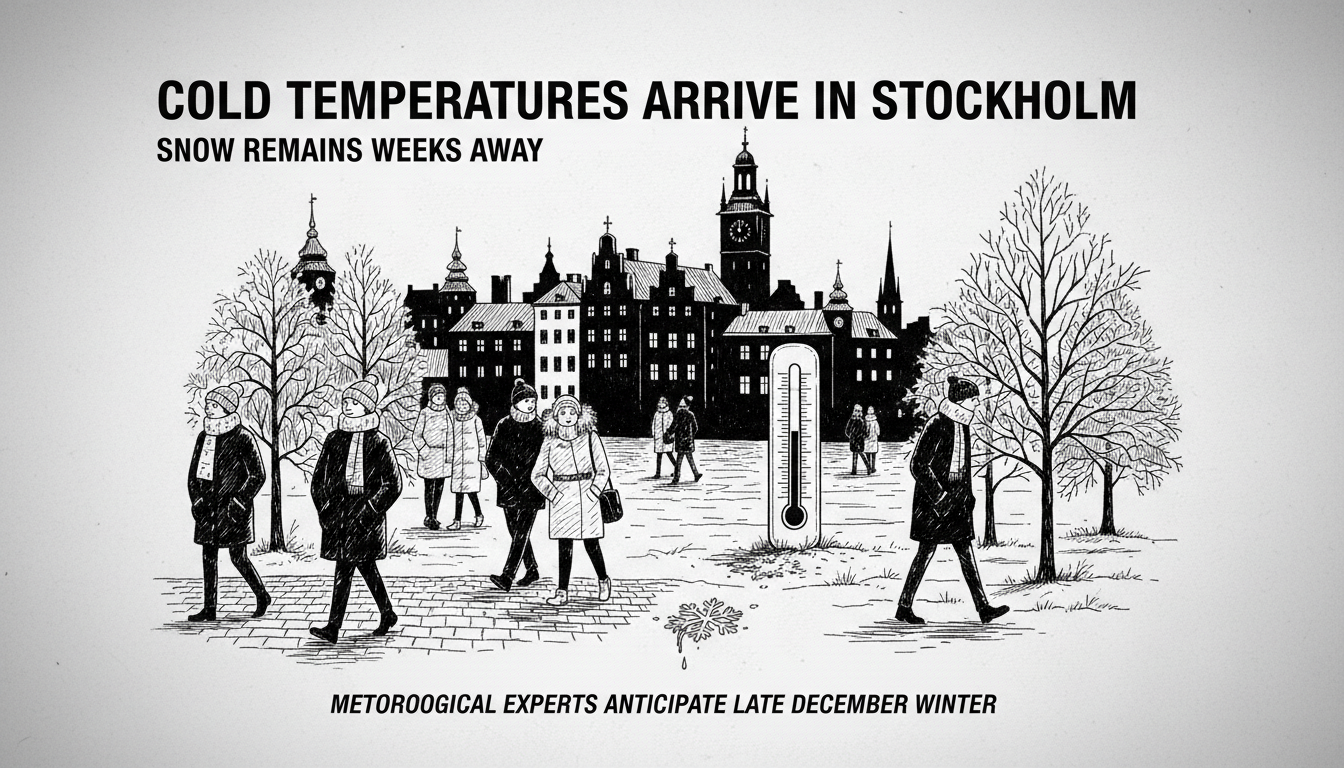Stockholm residents are experiencing freezing temperatures this week, yet the city's famous winter snow remains notably absent. Meteorologists confirm the region faces below-zero readings, particularly during nighttime hours. But true winter conditions require specific meteorological thresholds that typically arrive much later in the season.
A meteorological expert explained the official transition to winter. "The daily average temperature must stay below zero degrees Celsius for five consecutive days," he said in a statement. "We normally reach this benchmark only in late December."
This pattern reflects Stockholm's unique coastal climate, where cold air often arrives well before significant snowfall. The city's location between Lake Mälaren and the Baltic Sea creates microclimates that delay winter precipitation despite freezing temperatures.
For international residents and visitors, understanding Stockholm's winter progression proves important. The city operates differently once snow blankets its streets and waterways. Public transportation adjusts schedules, winter tires become mandatory, and daily life adapts to the challenging conditions.
Why does this delayed snowfall matter for Stockholm? The city's infrastructure and cultural life revolve around distinct seasonal changes. Restaurants postpone outdoor winter dining setups. Retailers delay sales of winter sports equipment. City planners hold off on deploying full snow removal resources.
Tourism also feels the impact. Many visitors hope to experience Stockholm's picturesque snow-covered old town during November. They often find instead a city in seasonal transition, with Christmas markets operating in cold but snow-free conditions.
The meteorological explanation involves complex atmospheric patterns. Cold air from Russia and Scandinavia must meet moisture-laden systems from the Atlantic to produce substantial snowfall. Until these systems synchronize, Stockholm experiences dry cold spells.
Historical data shows Stockholm's first permanent snow cover typically arrives between December 15 and January 10. The city averages 75 snow-covered days each winter, with deepest accumulations occurring in February.
For now, Stockholmers bundle up against the chill while anticipating the winter wonderland that statistics confirm remains several weeks away. The current cold snap serves as nature's warning that the real winter transformation approaches.
This seasonal delay carries economic implications too. Energy consumption rises gradually rather than spiking suddenly. Winter clothing sales increase incrementally. The city's famous archipelago ferries continue operating longer into the season.
The pattern demonstrates how climate change affects Nordic regions differently. While temperatures drop appropriately for the season, precipitation patterns shift in less predictable ways. Stockholm's relationship with winter continues evolving alongside global climate trends.

